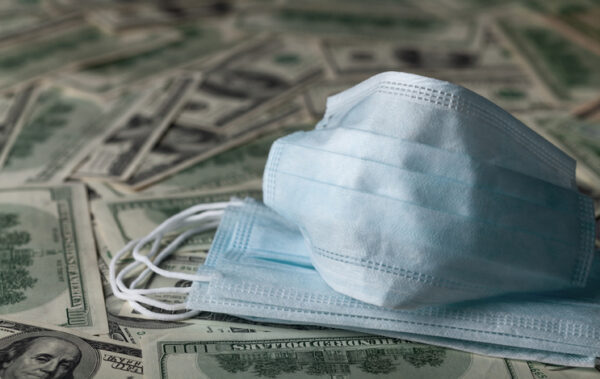
Over the past year and a half, Congress has provided $178 billion to support healthcare providers amid the Covid-19 pandemic, but billions still remain unspent, according to a new report by the Robert Wood Johnson Foundation.
Specifically, there was around $26.8 billion left unspent in the Provider Relief Fund in October, of which $11.7 billion has been allocated but not spent, $7.1 billion has not been allocated and $8 billion has been returned.

Behavioral Health, Interoperability and eConsent: Meeting the Demands of CMS Final Rule Compliance
In a webinar on April 16 at 1pm ET, Aneesh Chopra will moderate a discussion with executives from DocuSign, Velatura, and behavioral health providers on eConsent, health information exchange and compliance with the CMS Final Rule on interoperability.
Prepared by researchers at the Urban Institute with funding from the Robert Wood Johnson Foundation, the report used the most recent publicly available information to review how grants from the Provider Relief Fund have been allocated into general and targeted distributions and paid to providers.
Starting in April 2020, the Department for Health and Human Services released funds in two categories — one was general distribution and the other was targeted distributions to certain providers, including safety-net hospitals, rural providers and skilled nursing homes.
But, as of February, providers had returned $8 billion of the funds they received. Nearly three-quarters of the returned grants were from the general distributions, $2 billion from high-impact grants — that is, funds provided to hospitals in areas hit hardest by the pandemic at the time — and $1 billion from other targeted distributions.
Among the organizations that returned the funds were several major nonprofit and for-profit health systems that reported “they did not need the money because they had gained experience managing operations and expenses as the pandemic progressed, or they recovered sooner than expected,” the report states.

A Deep-dive Into Specialty Pharma
A specialty drug is a class of prescription medications used to treat complex, chronic or rare medical conditions. Although this classification was originally intended to define the treatment of rare, also termed “orphan” diseases, affecting fewer than 200,000 people in the US, more recently, specialty drugs have emerged as the cornerstone of treatment for chronic and complex diseases such as cancer, autoimmune conditions, diabetes, hepatitis C, and HIV/AIDS.
Organizations that have returned funds include Oakland, California-based Kaiser Permanente that returned $500 million and Nashville, Tennessee-based HCA Healthcare that gave back a whopping $1.6 billion.
Though some providers have returned the money, others have asked for more time to spend it. Providers currently have about a year from when they received the funds to spend it or they must return the money. The American Hospital Association is continuing to press HHS to let providers keep the money through the end of the public health emergency.
Report authors expect the Provider Relief Fund’s balance to increase as several facilities will need to return some of the grants because they cannot meet HHS’ timelines for usage.
Moving forward, policymakers must consider how best to financially support providers as the pandemic drags on.
“As the pandemic persists, we now have greatly improved knowledge of how to treat patients with Covid-19 and also a better understanding of how providers have used (or returned) emergency grants,” said Teresa A. Coughlin, a senior fellow at the Urban Institute, in an emailed news release. “Policymakers have an opportunity to consider how best to target the remaining funds in the Covid-19 Provider Relief Fund to healthcare providers to support providers who have been hardest hit by the pandemic and continue to have the greatest needs.”
Photo: Julia_Sudnitskaya, Getty Images












